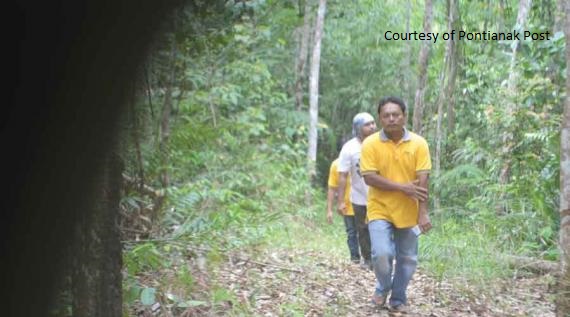
Perlindungan hutan Indonesia | Daju Pradnja Resosudarmo memetakan lima masalah utama soal perlindungan hutan Indonesia yang bisa menghambat kemajuan skema REDD.
Masalah Utama Perlindungan Hutan Indonesia
By: Isyana Artharini
At the UN Climate Change Conference held in Nusa Dua, Bali, in 2007, an innovative economic mechanism emerged — one that aimed to reward developing countries for preserving their forests.
Under this scheme, developed nations would pay developing countries with vast forest areas to refrain from deforestation, recognizing the vital role forests play in absorbing greenhouse gases produced by industrialized economies.
This mechanism was later known as REDD — Reducing Emissions from Deforestation and Forest Degradation.
As the country with the third-largest tropical forest area in the world, Indonesia stood to gain significant financial benefits from the REDD program.

Following the Bali Climate Conference, many Indonesian governors eagerly proposed forest areas in their regions as pilot sites for REDD projects — driven, in part, by the promise of substantial financial incentives.
However, five years later, Indonesia still faces major obstacles that hinder its ability to fully implement REDD and secure long-term funding for forest protection.
The central issue remains: Indonesia has yet to convincingly demonstrate its ability to protect forests from destruction — not only from illegal logging but also from flawed policy decisions.
The 5 Main Problems in Indonesia’s Forest Protection

At the fifth Forest Day in Durban, South Africa (December 4, 2011), forestry researcher Daju Pradnja Resosudarmo of CIFOR (Center for International Forestry Research), based in Bogor, identified five key problems that continue to hinder Indonesia’s progress in forest protection and REDD implementation.
1. Large-scale deforestation continues
Deforestation persists largely due to land-use conversion, particularly for agriculture and plantation expansion.
2. Indonesia’s economy remains highly dependent on natural resources
Natural resources — such as forests and mining — remain pillars of Indonesia’s revenue. Approximately 70% of the country’s non-tax income comes from natural resource extraction.
Forest conservation, including REDD preparation, has yet to become a national priority. In short, it is still more profitable to cut down forests than to conserve them.
3. Expansion of agricultural, plantation, and mining areas
The influx of foreign investment in palm oil and coal mining has accelerated the massive expansion of these industries — often at the expense of forest land.
Since most coal deposits lie beneath forest areas, and palm oil plantations typically replace forest cover, the pressure on forest ecosystems continues to mount.
Financial institutions also favor these sectors by offering low-interest loans for plantation or mining expansion, while property taxes on forest land remain low — allowing individuals or corporations to “own” thousands of hectares of forest at minimal cost.
4. Administrative overlaps
Roughly 70% of Indonesia’s land area is classified as forest and thus belongs to the state.
With decentralization, forest management authority has shifted to local governments — resulting in frequent overlaps between land-use permits issued by national and regional authorities.
These bureaucratic conflicts further complicate conservation efforts.
For example, Central Kalimantan Province has aggressively promoted palm oil expansion — a move that directly competes with REDD’s forest conservation objectives.
5. Political decision-making
The lack of transparency in licensing processes for extractive industries and the absence of community participation in decision-making remain major weaknesses.
Many policies prioritize short-term economic gain over environmental sustainability, perpetuating deforestation at the policy level.
A Call for Structural Reform
When asked about possible solutions, Daju emphasized the need for structural change:
“Other development projects receive substantial subsidies. If land and forests were made more valuable, competition for forest exploitation would decrease. The government should subsidize more projects that prioritize environmental sustainability.”
Without strong political commitment at the national level, Indonesia’s deforestation problem will remain difficult to resolve.
Sumber: http://wordpress.berita.yahoo.com/lima-masalah-utama-perlindungan-hutan-indonesia.html dengan judul Lima Masalah Utama Perlindungan Hutan Indonesia.
Repost by Gemawan
